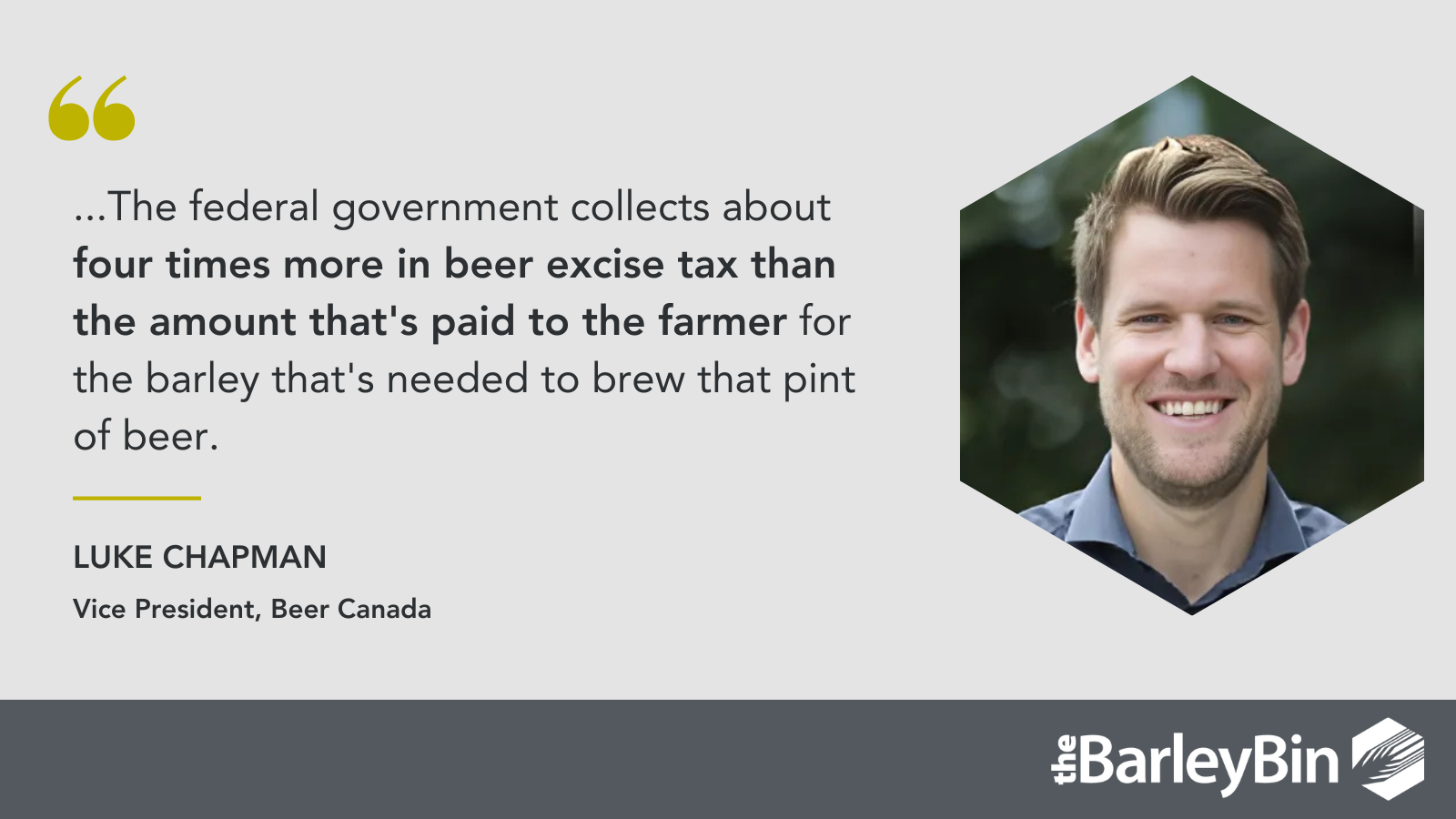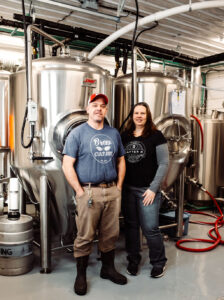Barley, Beer, and Betting on the Future
Despite market headwinds, malting barley farmers see opportunities in craft brewing and non-alcoholic beer.
As we continue to see significant shifts in global and domestic beer markets, Saskatchewan barley producers are making changes to weather the storm.
Some are shifting away from growing the crop, as exemplified by the fact that only 57% of the barley acres seeded in Saskatchewan last year were malting barley, compared to 65% in 2020.
But Gordon Moellenbeck isn’t one of them.

As a long-time malting barley producer, consistently seeding about 1,700-2,000 acres a year on his farm in Englefeld, SK, he says he has learned how to consistently produce a high-quality crop and has built a strong relationship with his buyer.
“We’ve been able to hit the grades and their specs for a long time so we’re really comfortable being malt producers,” he says, adding it took him a lot of time and energy to get to this point.
“You really do have to work at it. Just like a durum producer, if you want the top grade of durum, that has to be a focus and you’ve got to jump through the hoops to make sure you make it happen.”
Despite the extra effort required, malting barley has remained a profitable crop for Moellenbeck.
Inflation and taxation strain the brewing industry
Several factors have caused fluctuations in beer markets in recent years.
Globally, beer consumption has been declining over the last decade, due largely to inflation and rising production costs, increasing health concerns related to alcohol consumption, and growing demand for low- and non-alcoholic drinks.
The same trends are true within the domestic beer industry as well. Beer sales and consumption in Canada have been on a slow decline in recent decades, but decreased by 2.8% in 2022/2023, marking the largest per capita decline in history.
This has had a significant impact on producers, says Luke Chapman of Beer Canada.
“One of the unique aspects of the Canadian brewery industry is just how domestic it is. Last year, about 90% of all the beer purchased and consumed in Canada was made here. So, the industry does play quite an important role in the Canadian economy.”
Because of this, declining beer sales have a ripple effect across the value chain, he says.
“In a typical year, if beer sales are doing relatively as expected, Canadian brewers purchase about 350,000 tonnes of Canadian grown barley. So, any sales decline does have a direct impact on farmers.”
He says another unique factor affecting beer sales in Canada is the fact that federal beer taxes have increased about 16% under the current government, making our tax rate more than double that of the United States.

“Barley farmers may be surprised to learn that, just using a single pint of beer as an example, the federal government collects about four times more in beer excise tax than the amount that’s paid to the farmer for the barley that’s needed to brew that pint of beer.”
Also relevant is the fact that tax levels vary by the amount of alcohol in the beer. Beer containing alcohol levels of 0.5% – 1.2% are taxed at a rate of $3.07 per hectolitre, while those containing levels of 1.2 to 2.5% are taxed at a rate of $18.48 per hectolitre. When alcohol levels are higher than that, tax rates jump to $36.95 per hectolitre.
“I think those numbers were kind of determined somewhat arbitrarily. I’m not sure if there was a lot of analysis to reach those different rates,” Chapman says.

For craft brewer Ryan Moncrieff, the biggest challenge in recent years has been inflation.
“It just drives the price of everything up,” says Moncrieff, who owns and operates Rafter R Brewing Company in Maple Creek, SK, with his wife Teresa.
“The cost of production, across the board, is going up. Freight costs are ridiculous. And for a brewery, everything you need to make beer, except for water – even sometimes water, needs to be freighted in.”
For example, he says a couple years ago it would have cost a couple hundred dollars to get a pallet of malt shipped to his brewery. Now, it costs $500-600. The same is true for shipping in parts needed for his brewery.
“You used to get a Purolator or Canada Post package, depending on the size of it, for maybe ten bucks. Well, now it’s $30 for this little crinkly envelope with a couple of seals or something. And the seals were two dollars.”
He says when you factor in increased costs of utilities and other regular costs, it adds up quickly – especially at a time when many small businesses are still struggling with post-pandemic recovery.
“Everything like that is causing major issues. Everybody’s feeling the pinch.”
Craft and niche markets provide new opportunities
However, despite the current challenges, many within the industry remain optimistic about the future of the sector.
Some projections show that the global beer market is set to grow at a rate of 4.28% a year over the next decade, due in large part to rising incomes, urbanization and demand for new and novel products.
Globally and domestically, there’s also a lot of growth potential in the low-to-non-alcoholic beer sector, says Chapman.
“That is really the only segment of the Canadian brewing market that has seen growth in recent years,” he says, adding that the current government eliminated taxes on non-alcoholic (below 0.5% ABV) beer a few years ago.
“There’s growing interest among consumers to experiment and try lower, non-alcoholic beverages, and we think there’s an opportunity for government to play a role in promoting the production of more of those types of products by providing a favourable tax rate.”
Moncrieff also believes that there’s still lots of room for growth in the craft beer sector, in terms of new products and converting traditional beer drinkers. One of his favourite parts of the job is when people come into his taproom to try craft beer for the first time, and he sees the moment they are converted.
“People are super apprehensive about trying different things and beer drinkers are so fiercely loyal to the products that they’ve been drinking for who knows how long that it’s almost like they feel like they shouldn’t try something else,” he says.
“But we have some really great experiences with people and getting them to try their very first Saskatchewan made craft beer.”
He believes that, going forward, the industry needs to do a better job of making these experiences happen.
“There are lots of beer drinkers in Saskatchewan. We need to switch over some of those big beer box drinkers — somebody that’s been drinking the same thing for ten, twenty, thirty, forty years.”
Moellenbeck, who follows global beer markets closely and has developed a strong interest in the craft beer sector, agrees that the future is still bright, despite ongoing challenges.
“There is a big trend in non-alcoholic beer, which still uses malt. I think that will probably … not make the drop in malt quite as drastic.”
He also thinks there’s still lots of room for growth in the craft beer segment, in terms of new products and innovation.
“A lot of guys really brought out the different styles of beer and how they can be used,” he says. “I think a lot of people still haven’t even begun to tap into that.”
Written by Delaney Seifierling, freelance writer for the Spring 2025 edition of the BarleyBin Magazine.



